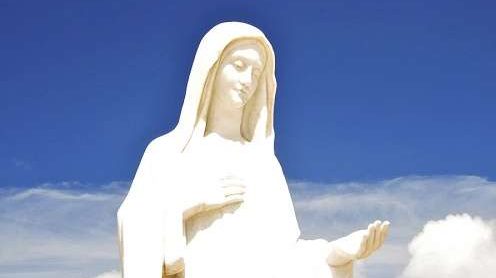A woman who claims to be a visionary of the Blessed Virgin Mary in the Bosnian town of Medjugorje has said that Mary will no longer appear to her on the second of every month, as she has reportedly done monthly since 1987.
Alleged Marian apparitions in Medjugorje have long been a subject of controversy in the Church, which have been investigated by the Church but not yet authenticated or rejected.
The alleged apparitions began June 24, 1981, when six children in Medjugorje, a town in what is now Bosnia and Herzegovina, began to experience phenomena which they have claimed to be apparitions of the Blessed Virgin Mary.
According to these six “seers,” the apparitions contained a message of peace for the world, a call to conversion, prayer and fasting, as well as certain secrets surrounding events to be fulfilled in the future.
Since their beginning, the alleged apparitions have been a source of both controversy and conversion, with many flocking to the city for pilgrimage and prayer, and some claiming to have experienced miracles at the site, while many others claim the visions are non-credible.
Among the alleged visionaries is Mirjana Dragičević Soldo, 55, who still lives in Medjugorje.
In 1987, she apparently began seeing the Blessed Virgin Mary on the second day of every month. During those alleged apparitions, Soldo prays with the Blessed Virgin Mary for non-believers, and conveys a message to the throngs of Catholic pilgrims who throng to Medjugorje for the event.
On March 18, Soldo announced that the Blessed Mother would no longer appear to her at that time, according to the Caritas community, which identifies itself as "the largest Medjugorje center in the world."
In January 2014, a Vatican commission concluded a nearly four-year-long investigation on the doctrinal and disciplinary aspects of the Medjugorje apparitions, and submitted a document to the Congregation for the Doctrine of the Faith.
When the congregation has analyzed the commission’s findings, it will finalize a document on the site, which will be submitted to the pope, who will make a final decision.
Pope Francis approved Catholic pilgrimages to Medjugorje in May 2019, but he has not made a deliberation on the authenticity of the apparitions.
Those alleged apparitions “still require an examination by the Church," papal spokesman Alessandro Gisotti said in a statement May 12, 2019.
The pope permitted pilgrimages “as an acknowledgment of the "abundant fruits of grace" that have come from Medjugorje and to promote those "good fruits." It is also part of the "particular pastoral attention" of Pope Francis to the place, Gisotti said.
Pope Francis visited Bosnia and Herzegovina in June 2015 but declined to stop in Medjugorje during his trip. During his return flight to Rome, he indicated that the process of investigation in the apparitions was nearly complete.
On the return flight from a visit to the Marian shrine of Fatima in May 2017, the pope spoke about the final document of the Medjugorje commission, sometimes referred to as the “Ruini report,” after the head of the commission, Cardinal Camillo Ruini, calling it “very, very good,” and noting a distinction between the first Marian apparitions at Medjugorje and the later ones.
“The first apparitions, which were to children, the report more or less says that these need to continue being studied,” he said, but as for “presumed current apparitions, the report has its doubts,” the pope said.
Pilgrimages to Medjugorje have declined in numbers in recent weeks. Radio Free Europe reported March 16 that the coronavirus pandemic has diminished significantly the number of visitors to the city, especially visitors from Italy, who would ordinarily be in Medjugorje during March.

